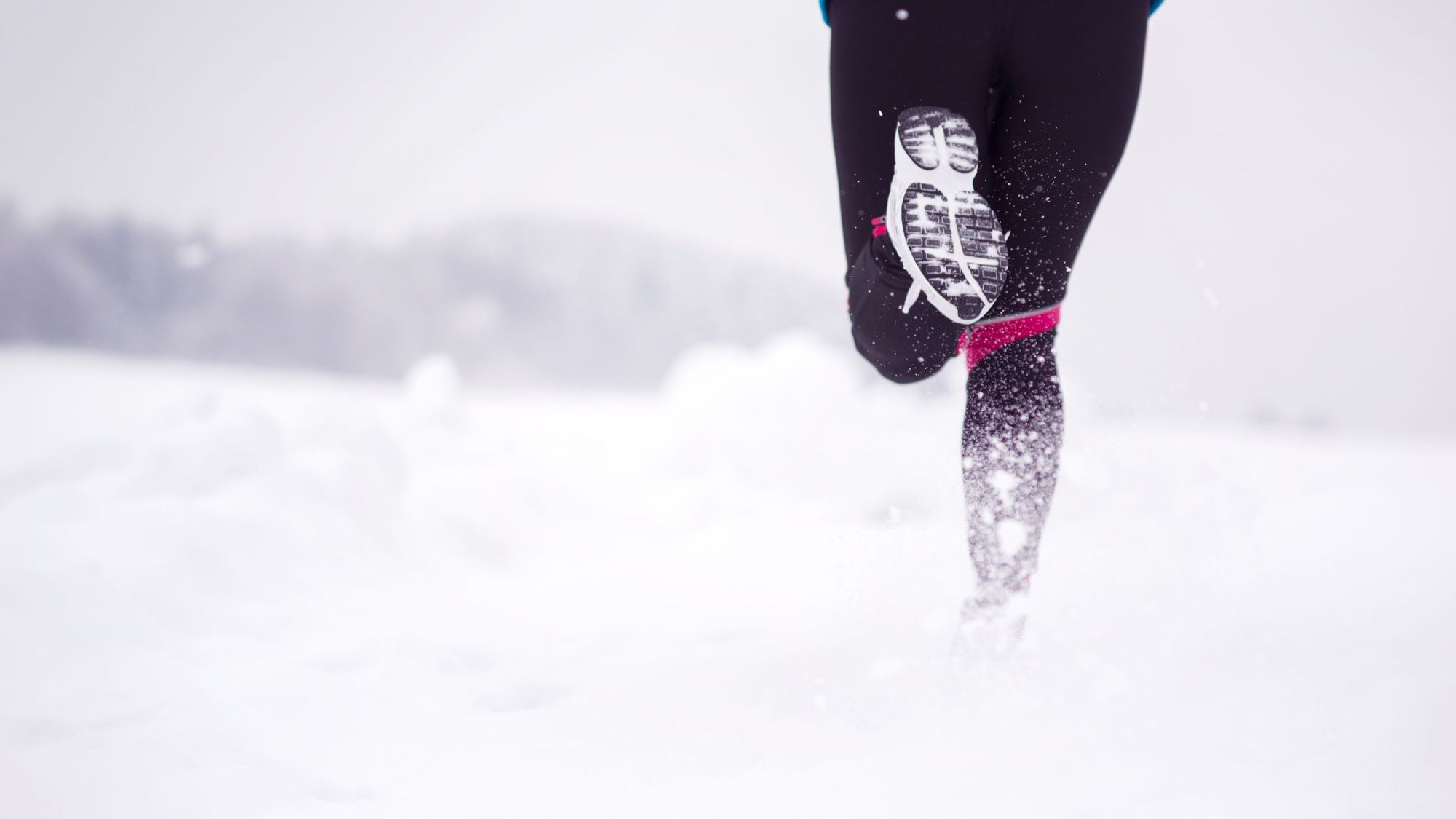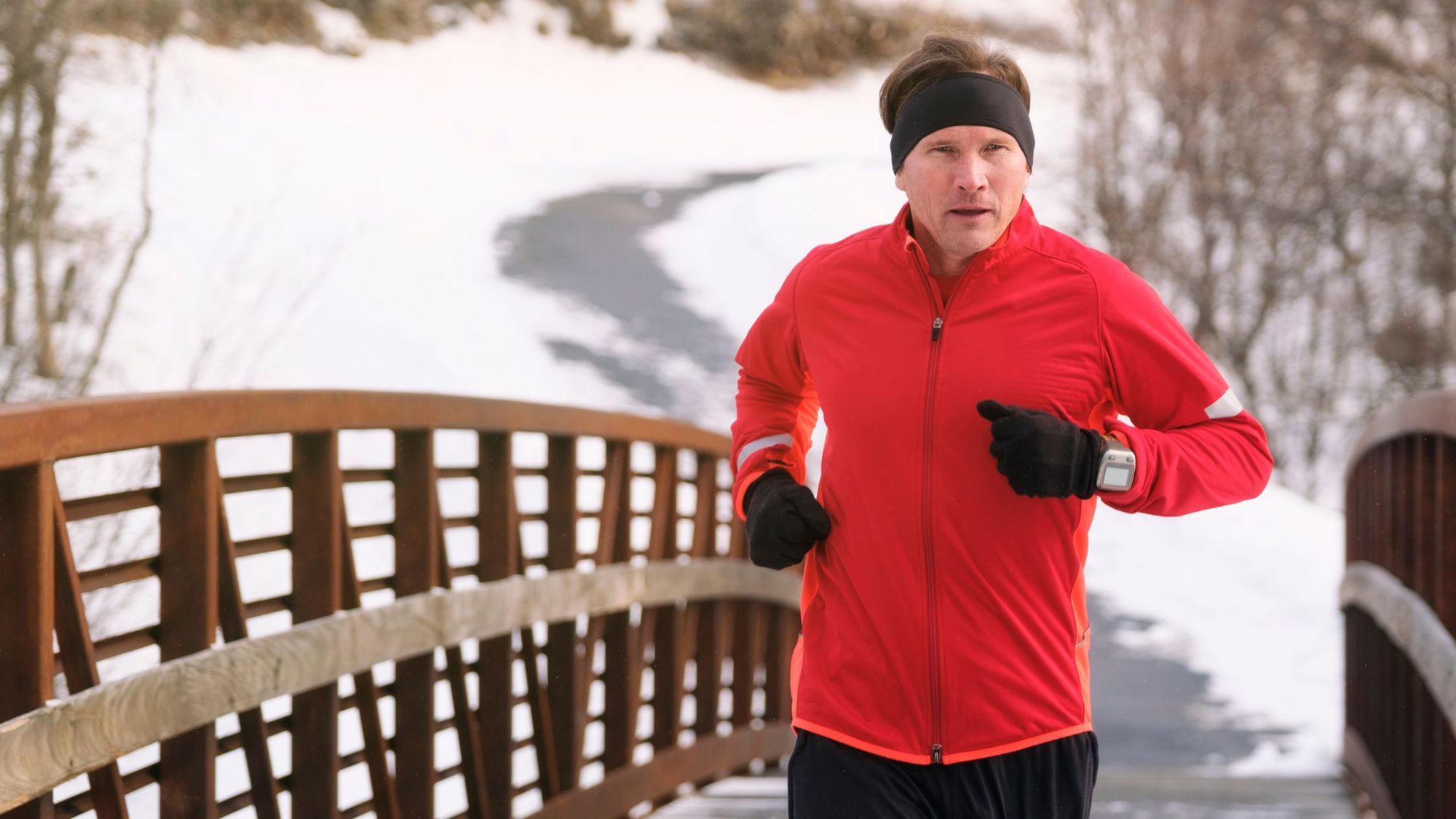
Winter running can be a refreshing and exhilarating experience. You need exposure to fresh outdoor air all year long, not just in the summer. There’s nothing quite like the cold air on your face when you first step out for a run in the winter, and the frost on your breath. Fresh air and outdoor activity is great for your mental health. The cold is considered to be excellent for your metabolism as well, which can make running in the cold quite beneficial. However, you need to be properly prepared before you step out into the winter weather for a run in chilly conditions.
Running in the cold can be a somewhat riskier endeavor than running in warm weather, as it tends to lead to more frequent running injuries because the ground is often icy and less stable. Additionally, if you don’t wear appropriate clothing, you have a higher chance of becoming sick or even suffering from hypothermia from a run in cold weather. Before you head out, make sure you give the below tips for winter running a read.
Tips for Winter Running
Cold-weather running is one of many great ways to stay active in the winter, and it can be fantastic for your health.
If you’re going to start running in cold weather, you’re going to need to be prepared to face the dropping temperatures. Your lungs are more vulnerable when you breathe in cold air, which can be damaging and lead to illness. You’re also at a higher risk of conditions like pneumonia and hypothermia, as well as frostbite.
The right clothing and footwear can be a game-changer for winter running, and you’ll find that even little things like changing your direction based on the wind can be incredibly helpful for enjoying this sport. Below, you will find a more extensive list of advice for speeding off into the cold and enjoying winter running safely:

1. Choose the Right Footwear
It’s important to choose shoes with as little mesh as possible for winter running. This is because the mesh allows cold rain or slushy snow and water to get into your shoes and soak your socks. However, you still want your running shoes to be breathable.
Selecting running shoes that are made from Gore-TEX means that you get breathability without the need for mesh. They work to wick moisture away from your feet, allowing them to breathe without overheating or leaving you drenched in foot sweat.

2. Warm Up Adequately Before Winter Running
This is an absolutely vital step, and while it is important to warm up before exercise year-round, warming up is especially important in cold weather. When you move around enough to get your blood pumping but without breaking a sweat, it prepares your joints and muscles for what’s to come.
This puts less strain on them, but it also warms your body so that the cold outside doesn’t hit you as hard. As a result, there is less stress on your body as it tries to adjust to the temperatures, which can also reduce the risk of you getting sick.
3. Motivate Yourself
Motivation is so important, and while it is not a tip that’s exclusive to winter running, it is one that can help keep you going. Before you head out, tell yourself that you can go back inside after five minutes if it’s too cold. For most people, they keep on going.
It’s a type of goal you can work towards, the concept of just five more minutes before you can stop. However, other runners use the thought of a hot cup of coffee and a cooked breakfast as ample motivation to get the run done. It’s whatever works best for you.
4. Use the Wind to Your Advantage
Some would say you’re outsmarting the wind with this one, but I like to think of it as working with the wind. When you start your run, run into the wind, and on your way home, make sure the wind is on your back. This prevents you from having to face biting blasts directly on your skin after you’ve broken a sweat.
Exposed skin is very vulnerable to these icy chills, so keep that in mind while you run. If you want to avoid running directly into the wind too much at the beginning of your journey, you can always run into it for ten minutes and then turn around for five minutes and repeat this until your running session is over.
5. Keep it Flexible
Remember that winter running is all about pacing. Speed doesn’t matter as much in the cold weather, and you need to remain flexible with your pacing and mileage. Where possible, look for inversions that allow you to reach higher ground, as it will be warmer up there and a little gentler on your body.
Additionally, if the temperature is so cold that even running during the middle of the day (when it is warmest) is difficult, don’t be afraid to split your exercise session into two runs instead of one. This puts less pressure on your body and allows you to still get the workout you want.
6. Get Changed Fast When You Get Home After Winter Running
The second you stop running, your temperature starts to drop, and this can be potentially harmful to your health. The second you get home, you need to strip out of your running clothes and put on something that’s warm and dry. If your hair is wet, get a warm hat and put it over to help provide further protection from the cold.
Pro tip: put some clothes in the dryer before your run, and they’ll be nice and warm for you to put on when you get home.
A hot drink is beneficial, and a good breakfast (or dinner) after your running session will help your body replenish energy so that it can keep you warm. Soup is definitely one of the best options as it works as both food and a hot drink.
7. Breathe Through Your Nose
When winter running, you might find that your throat becomes sore and dry while you run, and it might even make it difficult for you to breathe properly. This is because the cold air hits your throat when you breathe in through your mouths, and it can affect your lungs.
The best way to prevent this is to train yourself to breathe through your nose while you run instead of your mouth. Take deep inhales through your nose as you run. It can definitely take a bit of getting used to, but it is a highly effective method. Some runners also use neck scarves; while this can work, the breathing technique is the best.
Additionally, you should make sure your hat covers your ears while you run, as the cold air can lead to exceptionally sore ears. While this won’t cause an ear infection, the pain can be quite difficult to work through when running.
8. Wear Appropriate Layers and Sunscreen
You want to be warm without sweating to the point that you end up getting a chill. Layering is important, and while the thickness of the layers will depend on how cold it is in the winter where you live, below is a good base guide to get you started:
- Base layer: lightweight, tight-fitting, like a compression shirt.
- Mid-layer: looser insulated running shirt. Compression tights if it’s really cold.
- Outer layer: running jacket and trousers.
- Extras: gloves and a hat, thick socks, and running shoes.
Don’t forget about sunscreen, as it’s a myth that sunscreen is only required when embarking on outdoor activities in the summer. You need to wear sunscreen all year round. Since your face is exposed during a winter run, you’ll need to put some sunscreen on your face.
How to Warm up When Running in Cold Weather
If you want to know a little more about what your warm-up routine should look like before you embark on winter running, here’s a little look at what we recommend doing before a cold-weather outdoor run:
- Jumping jacks
- Straight leg raises
- Knee bends
- Hip circles
- Knee circles
- Standing leg swings
- Squats
- Trunk rotations (cat-cows)
- Hamstring stretches (on a mat with a resistance band)
- Front lunges
- Side lunges
- Squat jumps
- Quad stretches
All of the above stretches and exercises can be found with video tutorials on YouTube if you’re unfamiliar.
Remember that warming up can help reduce the risk of common running injuries while preparing your body to face the cold weather.
Winter Running Tips for the Elderly
If you’re running as a senior, the tips above also apply to you. However, there are additional health risks when running as a senior, so there are a few additional steps you can take to make winter running safe and enjoyable.
Adding a few extra layers can be beneficial, especially as your core body temperature tends to be lower when you get older. Additionally, you will need to be more aware of weather conditions as you have an increased risk of serious injury should you fall in icy or slippery conditions.
Finally, your skin tends to be thinner when you get older, so you are still at risk from the UV rays produced by the sun. As a result, a stronger sunscreen and SPF lip balm should be worn before you head out to ensure you are protected.
Final Thoughts
Winter running can be a freeing experience, and it’s a wonderful way to get fit while also enjoying the winter scenery and fresh air. However, you do need to stay safe and make sure you are ready to take on the cold weather. With these tips, you should be good to get out there and hit the trail.
While you’re here, a DNA test from CircleDNA provides you with a fitness report that reveals genetic risk of certain running-related injuries, and lists your genetic strengths and weaknesses when it comes to physical fitness. This gives you a clear idea of if you were, for example, built for strength or endurance, which then helps you plan out a running style and routine that works with your body.
References:
- NCBI, Practicing Sport in Cold Environments: Practical Recommendations to Improve Sport Performance and Reduce Negative Health Outcomes: https://www.ncbi.nlm.nih.gov/pmc/articles/PMC8471173/
- NCBI, An experimental exposure study revealing composite airway effects of physical exercise in a subzero environment: https://www.ncbi.nlm.nih.gov/pmc/articles/PMC7946023/







Comments are closed.